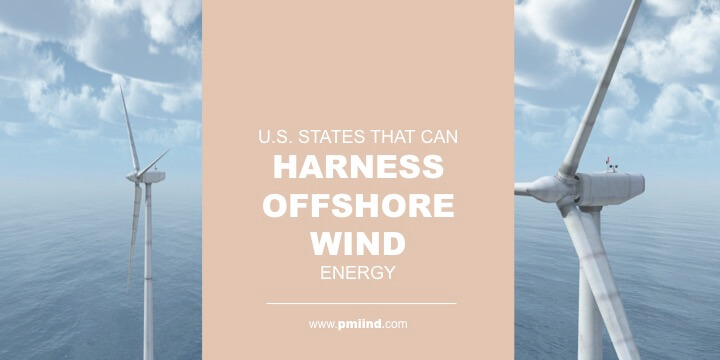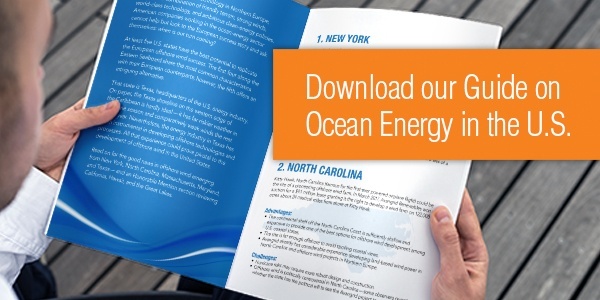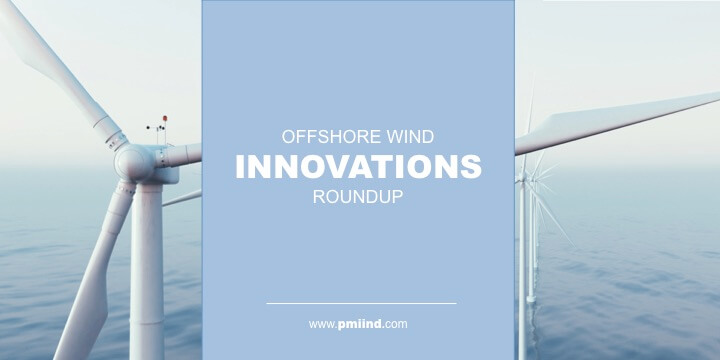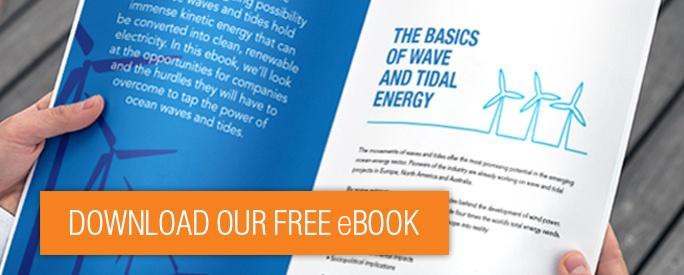With more than 95,000 miles of shoreline, the United States looks like an ideal candidate for offshore wind energy development. But it’s not that simple.
A substantial portion of U.S. shoreline tracks the Southern Atlantic states and the Gulf of Mexico, where the winds are either too weak most of the year or potentially catastrophic during hurricane season. The Pacific Coast has steady, powerful winds, but the continental shelf drops off sharply near the shore, requiring floating wind-power platforms that cost much more than fixed-position wind farms.
The economics of offshore wind present a second order of complexity. Offshore wind developers have to weigh factors including:
- Costs of competing energy sources like coal and natural gas
- Population density of the area using the power
- Availability of subsidies and renewable energy credits
- Expense of designing, manufacturing, and deploying wind farms
An intriguing study from the Berkeley Lab’s Electricity Markets & Policy Group developed a series of models to compare the economic value of offshore energy projects along the Eastern Seaboard of the United States from 2007 to 2016:
“The market value of offshore wind between 2007-2016 varies significantly by project location and is highest for sites off of New York, Connecticut, Rhode Island, and Massachusetts,” the study found.
States with most promising developments
In a May 2018 article, POWER magazine listed the most promising states for offshore wind. That roundup included:
- Massachusetts. With the doomed Cape Wind project finally out of the picture, the prospects for other offshore power projects are improving. The state government has passed legislation targeting 1,600 MW of offshore wind power by June 30, 2027. The law requires a buffer of 10 miles between offshore wind farms and inhabited areas to avoid angering the public, which prizes its coastal views. Three companies are bidding for projects off Martha’s Vineyard.
- Maryland. Two companies have been awarded renewable energy credits to develop wind farms of 120 MW and 248 MW. The credits are worth $3.6 billion over two decades. Developers are required to create nearly 5,000 jobs and invest in a steel fabrication plant and port upgrades. The project will involve 77 turbines from 12 to 21 miles offshore.
- New York. Gov. Andrew Cuomo would like to see 2,400 MW of offshore wind power developed in the next two decades. He wants to start with 800 MW in 2018-19.
- New Jersey. The state’s Offshore Wind Economic Development Act, passed in 2010, sets a goal of 3,500 MW of new power generation by 2030. The state’s Board of Public Utilities plans to solicit 1,100 MW of new projects, which would be the nation’s largest so far.
States and projects further down the coastline in Georgia and the Carolinas appear much less likely to bear fruit, the POWER magazine article explained.
Pacific Ocean possibilities
The Pacific Coast and the Hawaiian Islands each present intriguing opportunities because their terrain limitations require innovations in floating offshore platforms. Unlike Europe’s North Sea and the Eastern Seaboard of the United States, the shoreline of the Pacific plunges to depths that are impractical for the development of standard offshore wind turbines mounted on the seafloor.
In May 2018, the U.S. Navy complicated matters even further, stating that vast swaths of California coastline — including all of Southern California — should be off-limits to wind farms because the Navy needs that space for national defense purposes, the Los Angeles Times reported. The Navy cannot decide where wind farms will be deployed, but it has considerable influence.
Perhaps the best news for the Pacific comes from the coast of Scotland, where the first floating platform offshore wind farm is up and running. That wind farm is proving to be remarkably energy efficient, using up to 65% of its capacity factor, which is far better than land-based gas and coal power, according to Greentech Media. Capacity factor estimates a powerplant’s output as a percentage of its theoretical full energy output.
With the cost of developing offshore wind farms falling rapidly and floating platforms showing promise, power from the Pacific might be closer to reality than many observers suspect.
Great Lakes
A wind farm project in the works near our home base in Cleveland will test the viability of the Great Lakes, which have ample wind, high population densities, and relatively shallow water.
The Icebreaker project plans to deploy six turbines in Lake Erie about 8-10 miles northwest of Cleveland. Supporters hope this pilot project becomes a catalyst for further development throughout the Great Lakes.
Offshore wind is coming to U.S. shores
Many coastal states have ambitious renewable-energy goals that will require the development offshore wind because there’s only so much they can do with solar, land-based wind, and biofuels. Fortunately, they can benefit from decades of European experience in offshore wind combined with steep declines in development costs.
U.S. wind projects also raise the prospect of bringing good-paying jobs and economic development to communities that need a boost after declines in their manufacturing base.
As a manufacturer of premium cable accessories for offshore wind and other marine-energy projects, PMI is doing its part to support the industry and help reduce our reliance on fossil fuels. We believe the United States is ready for offshore wind, and judging from the volume of new projects in the pipeline, we’re not alone in that assessment.
Related articles:
America’s First Offshore Wind Farm Is Finally Ready for Prime Time
Why the U.S. Should Embrace Offshore Wind
How Ice Could Impact Subsea Cables and the Great Lakes’ Offshore Wind Success
The Cable Challenges of Saltwater vs. Freshwater for Offshore Wind Projects
The challenges of developing practical, economical offshore wind power are pushing engineers and entrepreneurs to new heights — and depths — of ingenuity.
We’ve talked about the pitfalls and potential of offshore wind and other marine renewables for years in our Ocean Engineering Blog. We’ve noted that it’ll never be easy to build technologies that must be submerged in corrosive, turbulent subsea environments. And marine-renewables will remain a tough sell as long as oil prices stay low.
But these challenges haven’t stifled innovation in the ocean-renewables sector, especially offshore wind. Here’s a look at some of the encouraging news we’re seeing:
Autonomous underwater and remote-operated vehicles (AUVs, ROVs)
The cost of deploying ships and divers to inspect, maintain, and repair cables and other subsea components has been a costly drag on offshore wind farms for decades. Widespread adoption of versatile, low-operating-cost AUVs and ROVs can reduce those costs substantially.
As we learned at Subsea Expo 2018 in Aberdeen, Scotland, companies developing advanced AUVs and ROVs are adding new capabilities that, for instance, add a cutting tool to an inspection AUV. Another promising development is underwater charging stations that allow subsea vehicles to roam free without cables. Instead, the stations themselves have cable connections to power sources.
Larger, more powerful turbines
GE Renewable Energy’s forthcoming Haliade-X 12-mw turbine underscores the drive to build ever-larger devices that produce more energy in a single tower. Billed as the most powerful turbine on the planet, the Haliade-X will be able to power 16,000 European households with a single turbine. That means a single wind farm of 50 towers could serve 800,000 households — potentially a city of more than 2 million people.
Standing 260 meters high with a 220-meter rotor, the Haliade-X will produce 45% more energy than any other turbine on the market, GE says. It’s expected to start showing up in wind farms in 2021. For more on the size challenges in offshore wind, see this profile of former Siemens CTO Henrik Stiesdal in Wind Power Monthly.
Floating platforms
The prospects for offshore wind farms on floating platforms got a boost in March 2018 when Statoil announced its new floating platform off the coast of Scotland reached a 65% capacity factor for November 2017 through January 2018 — besting a host of competing power sources. That news supports the principal rationale for floating platforms: deploying them farther from shore, where the winds are stronger and more consistent.
Capacity factor estimates a powerplant’s output as a percentage of its theoretical energy capacity. Greentech Media noted that U.S. onshore wind farms have a capacity factor of 37%, while coal- and gas-fired power plants have capacity factors of 54-55%.
Suction-bucket foundations
Floating platforms could be the future of offshore wind, but most projects in the next few years will keep using towers anchored to the seabed. Current anchoring methods create an abundance of noise, disturbing sea life and generating concerns about the environmental impact of offshore installations.
A new alternative is the suction-bucket foundation, which uses a base shaped like an inverted bucket. It works like this: After the bucket settles on the seafloor, operators pump out all the water inside it, creating a pressure differential that helps fix the bucket in place. When it’s time to decommission the bucket, water can be poured back into it. The first commercial-scale suction-bucket foundation in a wind farm was installed earlier this year off the coast of Scotland, Powermag.com reported.
Research updates
Here’s a look at recent research in the offshore-wind sector:
- Seabird avoidance. Seabirds have little trouble avoiding the spinning blades of offshore-wind turbines, a new study finds. Windpower Engineering & Development summarized results of the Bird Collision Avoidance Study, which used video cameras and high-tech sensors to track bird movements around a working wind farm in the English Channel. The study analyzed more than 600,000 videos monitoring activity at the wind farm. Of those, about 12,000 showed bird activity. Notably, the videos captured a scant six collisions over the course of the study.
- Anti-corrosion studies. Offshore Wind Journal reviews reports pointing to potential solutions to the nagging problem of corrosion in subsea environments. The reports estimated that reducing corrosion could generate savings in the tens of billions of dollars throughout the ocean-renewables sector over the next three decades.
Offshore wind keeps showing more promise
These updates offer just a glimpse of the encouraging developments in the offshore-wind sector. As turbines grow more powerful and engineers figure out new ways to reduce costs and protect subsea ecosystems, it will become ever more realistic to depict offshore wind as an experimental power source with mainstream potential.
Related articles:
Innovations Shrink Offshore Wind Timelines
Artificial Island Sparks Innovation In Wind Energy
Pros and Cons of Floating Platforms in Marine Renewable Energy





